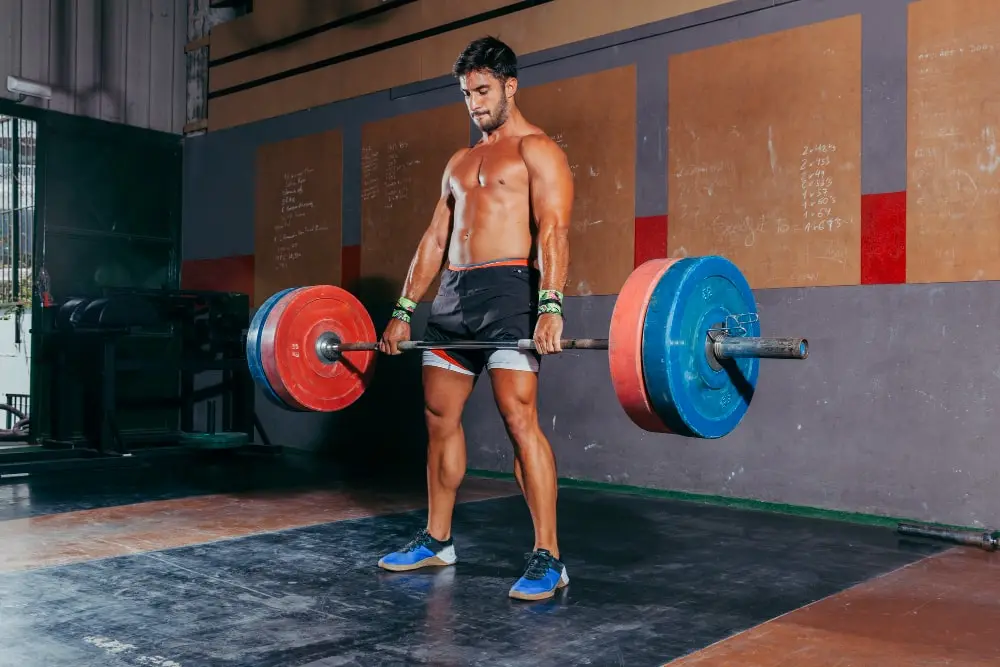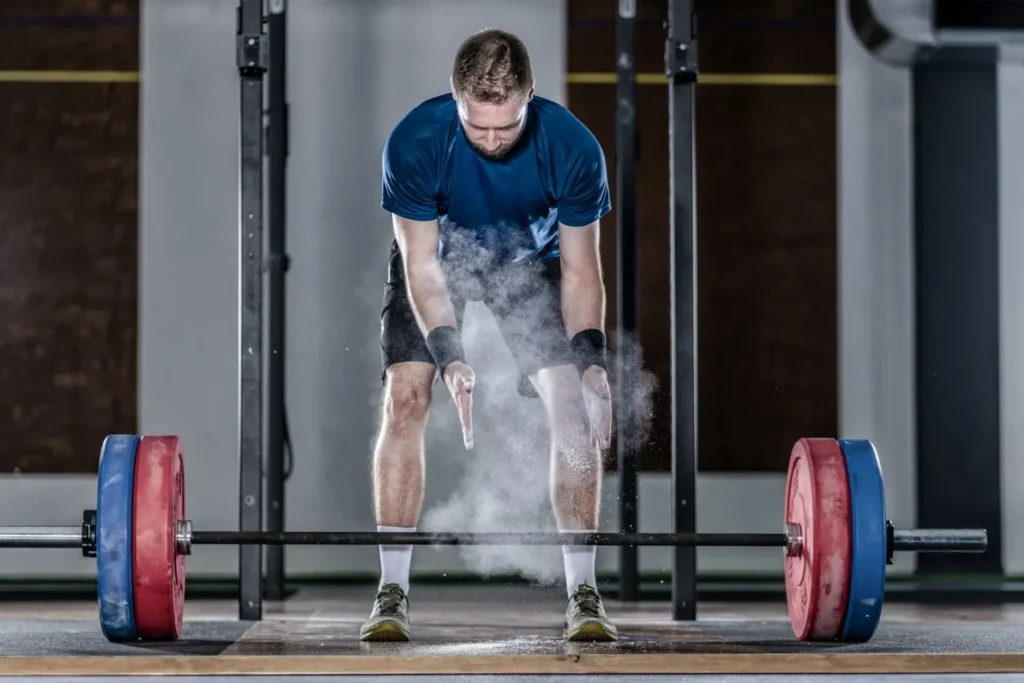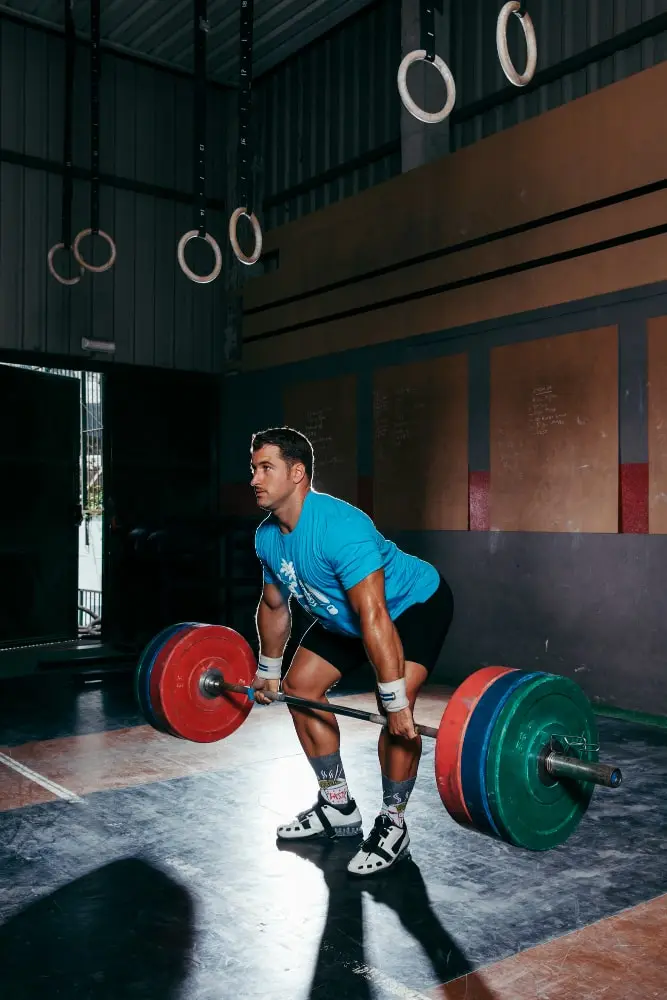Imagine it. You descend into a wide, powerful stance, feet turned outward, a loaded barbell a hair’s breadth from the ground. Then, with a controlled surge, you erupt, bar in tow, conquering gravity in a primal display of strength. This isn’t just a deadlift; it’s a Sumo Deadlift – a brutal ballet of muscle fibres firing in unison, sculpting your physique and forging an iron will.
But beyond the badassery, what muscles exactly does this sumo stance unleash? Hold onto your barbells, because we’re about to dive into the science of this potent exercise.
The Powerhouse Posse

The Sumo Deadlift, named for its resemblance to the formidable stance of Japanese Sumo wrestlers, engages a symphony of muscle groups, primarily targeting your:
- Glutes: These hip thrusters take center stage, with research by Schoenfeld et al. (2013) showing a 17% greater activation compared to the conventional deadlift. Picture them as the engine driving the lift, propelling you skyward.
- Hamstrings: These knee flexors act as your secondary powerhouses, working in tandem with the glutes to extend your hips. A study by Escamilla et al. (2002) found similar hamstring activation in both sumo and conventional variations, though some lifters may feel a greater emphasis depending on individual technique.
- Quads: This surprise guest gets a VIP invite to the sumo party. The wider stance places more demand on your quads for hip extension, with EMG studies by Fry et al. (2003) revealing a 25% increase in quad activation compared to the conventional deadlift. Think of them as the stabilizers, keeping your knees tracking straight and preventing that embarrassing wobbly-leg syndrome.
Beyond the Big Three
But the Sumo Deadlift doesn’t stop there. This multifaceted movement throws a welcome party for other supporting muscle groups, including:
- Adductors: These inner thigh powerhouses get a good workout, thanks to the wide stance requiring inward rotation of the hips. A study by Escamilla et al. (2002) found the Sumo Deadlift activates the adductors significantly more than the conventional variation, making it a secret weapon for sculpting sculpted, powerful legs.
- Core: Your abs and obliques act as the invisible orchestra conductor, ensuring proper spinal alignment and preventing unwanted twists and turns. The isometric contraction throughout the lift strengthens your core like a blacksmith hammering iron.
- Upper Back: Don’t forget your upper body posse! Your traps and rhomboids work overtime to keep your shoulder blades retracted and spine stabilized, ensuring safe and efficient lifting.
- Grip Grandeur: Forearms often get overlooked, but the Sumo Deadlift gives them a workout to remember. The wider grip requires greater grip strength and stabilization, leading to potential improvements in other compound exercises and everyday tasks. A study by Blazevich et al. (2001) found that Sumo Deadlift training significantly increased grip strength compared to conventional deadlifts.
- Mobility Maestro: The Sumo Stance’s demand for increased hip mobility isn’t just about building bigger legs. This improved mobility can translate to better athleticism and everyday movement patterns. Research by Hewett et al. (2005) suggests that incorporating sumo-style exercises can enhance hip mobility and reduce injury risk in athletes.
The Sumo Advantage

So, why choose the Sumo Deadlift over its conventional deadlift? Research by Schoenfeld et al. (2013) suggests that the Sumo Deadlift may be:
- Easier on the Lower Back: The wider stance reduces spinal flexion, potentially placing less stress on your vulnerable discs. This can be particularly beneficial for lifters with lower back issues.
- A Greater Strength Booster: Studies by Escamilla et al. (2002) and Fry et al. (2003) found that the Sumo Deadlift activates certain muscle groups (namely, glutes and quads) to a greater extent than the conventional version, potentially leading to faster strength gains.
- A Mobility Guru: The wide stance demands increased hip mobility, which can translate to improved athleticism and everyday movement patterns.
Unleashing the Sumo Within
Before you unleash your inner Sumo warrior, remember proper form is paramount. Here are some key tips:
- Stance: Feet wider than shoulder-width, toes pointed slightly outward.
- Grip: Hands slightly inside your knees, thumbs wrapped around the bar.
- Engage: Squeeze your glutes, core, and upper back before initiating the lift.
- Hinge: Sit back, keeping your back straight, until you feel a stretch in your hamstrings.
- Lift: Drive your feet into the ground and extend your hips to lift the bar.
- Control: Lower the bar with control, maintaining proper form throughout the descent.
The Final Rep
The Sumo Deadlift is a potent tool for building a powerful, well-rounded physique. So, embrace the stance, unleash the symphony of muscles within, and conquer the iron with every rep. Just remember, proper form is your sumo-sized safety net, ensuring you reap the rewards without risking injury. Now go forth, champion, and deadlift like a Sumo!
Conclusion
In conclusion, the Sumo Deadlift is a powerful tool for building a well-rounded physique, sculpting muscles you didn’t even know existed, and improving overall mobility. So, embrace the wide stance, unleash the symphony of muscle activation within, and conquer the iron with every Sumo Deadlift rep. Remember, proper form is your key to unlocking these benefits without risking injury. Consult a qualified trainer if you’re new to the exercise, and watch your strength and physique soar to new heights!
If you liked our Guide on Sumo Deadlift Muscles Worked, Give us your important feedback.
FAQs
Does the Sumo Deadlift work different muscles than the Conventional Deadlift?
Yes! The wider stance in the Sumo Deadlift shifts the emphasis to different muscle groups.
Is the Sumo Deadlift easier on the lower back than the Conventional Deadlift?
Potentially! The wider stance in the Sumo Deadlift reduces spinal flexion, which can be easier on your lower back, especially if you have pre-existing back issues. However, proper form is crucial for both variations to minimize back strain.
Can I use the Sumo Deadlift to build bigger inner thighs?
Absolutely! The wide stance and adductor engagement of the Sumo Deadlift make it a fantastic exercise for sculpting strong, defined inner thighs
What are some tips for proper Sumo Deadlift form?
Here are some key pointers for optimal Sumo Deadlift form:
1. Wide stance: Feet wider than shoulder-width, toes slightly outward.
2. Grip: Hands slightly inside your knees, thumbs wrapped around the bar.
3. Engage your core and upper back.
4. Sink your hips back, keeping your back straight.
5. Drive your feet into the ground and extend your hips to lift the bar.
6. Control the descent throughout the entire movement.
Hello, fellow fitness enthusiasts! I'm Zayn, a Board Certified Fitness and Nutrition Coach. My journey started from a personal commitment to fitness, and over time, this passion ignited a desire to help others unlock their potential. I transformed this passion into my profession, and today, I'm proud to say that I am armed with a plethora of certifications, all testament to my dedication and commitment.
When I'm not advising clients or working on my next blog post, you'll find me trying out new fitness regimes, diving into the latest nutritional research, or practicing what I preach with my own healthy lifestyle. My mission is to help you become the best version of yourself, showing that fitness and nutrition are as much about the journey as they are about the destination.


